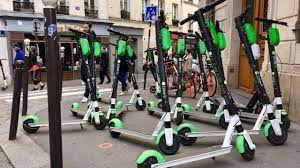Micro-mobility has emerged as a transformative force in urban transportation, offering compact, eco-friendly, and efficient solutions to address the challenges of modern city living.
With the rise of traffic congestion, air pollution, and the need for sustainable commuting options, micro-mobility presents a promising alternative for short-distance travel.
This article delves into the concept of micro-mobility, its various forms, benefits, challenges, and its potential to reshape the way we navigate our cities.
Understanding Micro-Mobility
Micro-mobility refers to lightweight, compact transportation options designed for short-distance travel within urban environments.
This includes electric scooters, bicycles, skateboards, and even small electric vehicles like Segways.
These modes of transportation are typically available for short-term rentals through smartphone apps, making them accessible and convenient for urban commuters.
Electric Scooters – The Urban Commuter’s Best Friend
Electric scooters have become a common sight in many cities worldwide. They offer a practical and efficient way to cover short distances without contributing to air pollution.
With simple smartphone apps for locating and unlocking scooters, users can easily hop on an e-scooter, ride to their destination, and leave the scooter parked responsibly for the next user.
Bike-Sharing Programs – Green and Healthy Commuting
Bike-sharing programs have gained popularity as a sustainable and health-conscious mode of micro-mobility.
Cities are embracing the idea of rentable bicycles stationed at various points throughout urban areas.
Commuters can easily rent a bike, pedal to their destination, and then return the bike to a designated docking station.
This promotes physical activity, reduces traffic congestion, and improves air quality.
Skateboards and Hoverboards – Compact and Fun
Skateboards and hoverboards are compact, agile, and a popular choice among the younger population.
These micro-mobility options are not only fun to ride but also efficient for short trips within the city.
While skateboards are human-powered, hoverboards are electrically powered, offering a unique and futuristic way to commute.
Benefits of Micro-Mobility
Micro-mobility brings a host of benefits to urban transportation:
a. Reduced Traffic Congestion: By encouraging shorter trips through compact options, micro-mobility helps ease traffic congestion in busy urban areas.
b. Eco-Friendly Commuting: With no tailpipe emissions, electric micro-mobility options significantly contribute to reducing air pollution and greenhouse gas emissions.
c. Improved Last-Mile Connectivity: Micro-mobility effectively addresses the “last-mile” problem, connecting commuters from public transit stops to their final destinations.
d. Cost-Effective: Micro-mobility options are often more affordable than traditional transportation methods, making them accessible to a wide range of commuters.
e. Health Benefits: Micro-mobility encourages physical activity, promoting better health and well-being among users.
Challenges and Considerations
While micro-mobility offers numerous advantages, there are also challenges that need to be addressed:
a. Safety Concerns: The surge in micro-mobility usage has led to safety concerns, particularly regarding accidents and collisions. Implementing safety regulations, rider education, and infrastructure improvements are essential.
b. Parking and Docking: Ensuring responsible parking and docking of micro-mobility vehicles can be a challenge, as improper parking may obstruct pedestrian pathways.
c. Integration with Public Transit: Integrating micro-mobility options seamlessly with public transit systems requires cooperation and coordination between private companies and local authorities.
Conclusion
Micro-mobility is reshaping urban transportation, providing compact and sustainable solutions to the challenges of modern city living.
As cities work towards building a greener and more efficient transportation ecosystem, micro-mobility options are set to play an increasingly vital role in transforming the way we move.
By embracing these innovative alternatives, urban centers can alleviate traffic congestion, reduce air pollution, and create a more connected and vibrant urban environment for residents and visitors alike.
However, striking a balance between promoting micro-mobility and addressing safety and infrastructure concerns remains crucial for its successful integration into the fabric of modern cities.

